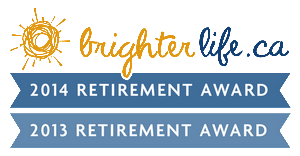This was published in Medical News Today. All data and statistics are based on publicly available data at the time of publication. Some information may be out of date.
Myth 3: Vitamin C can fight SARS-CoV-2
Vitamin C is another essential nutrient that has received a lot of attention. Many people believe that it can prevent or even cure the flu or common cold.
Although it is true that sufficient vitamin C can help support immune function, current evidence regarding its effectiveness in treating or preventing colds and influenza is limited and often contradictory.
Despite this, there have been claims that this Vitamin might help fight infections with the new coronavirus.
It is possible that people are basing these claims on an existing ongoing clinical trial in China, which is looking at the effects of high dose intravenous (IV) vitamin C on hospitalized patients receiving care for severe COVID-19.
The researchers expect to complete the trial by the end of September 2020. No results are available in the interim.
Commenting on the trial, experts from the Linus Pauling Institute — which focuses on health and nutrition — at Oregon State University in Corvallis explains that although high dose IV vitamin C might help alleviate COVID-19 symptoms in severely ill patients, regular vitamin C supplements are very unlikely to help people fight off infections with SARS-CoV-2.
The experts warn that “IV vitamin C is not the same as taking vitamin C supplements,” as they would never raise blood levels of this vitamin as highly as an IV infusion would.
They also warn people who may be tempted to up their dosage of vitamin C of the fact they could end up taking too much and experiencing adverse side effects.
Myth 4: The keto diet can cure COVID-19
Keto diets, which are high in fats and low in carbohydrates have also received some attention in the context of treating or preventing COVID-19.
This may be because there is some evidence to suggest that keto diets could help boost the immune system. However, much of that evidence is based on animal studies rather than human trials.
Also, an upcoming clinical trial from Johns Hopkins University in Baltimore, MD, proposes to look at whether a ketogenic intervention might help intubated COVID-19 patients by reducing inflammation.
The intervention would necessitate the administration of a specially devised ketogenic formula through enteral feeding. It would be a last-resort procedure for those in a critical condition.
There is currently no evidence to suggest that following a keto diet could help a healthy person prevent or treat an infection with SARS-CoV-2.
However, there is evidence to suggest that keto diets can expose people to certain health risks — such as by raising cholesterol levels. Keto diets may also have side effects, such as flu-like symptoms, headaches, nausea, and changes in blood pressure.
Myth 5: Herbal remedies can help
There are also claims suggesting that various herbal medicines might be able to fight off the new coronavirus.
This may partly be based on a statement issued by A Chinese official in April 2020, suggesting that certain herbal drugs could help treat COVID-19, as communication in The Lancet on May 15, 2020, reports.
Author Yichang Yang — from the Department of Traditional Chinese Medicine at the Second Affiliated Hospital of Zhejiang University School of Medicine in Hangzhou, China — warns that people should take encouragement to use herbal remedies in the treatment of COVID-19 with a pinch of salt.
Yang warns that herbal remedies — including the drugs that the Chinese official names — can have unexpected risks and may not be as effective as some people claim. Also, evidence from human trials is limited.
For similar reasons, he also notes that the mechanisms through which herbal drugs work on the body are often unclear, which may mean that they are not always safe.
A mystery “herbal cure” for COVID-19 on sale in Madagascar — a herbal tea made from artemisia plants — has also spurred worry among specialists, who say that the “remedy” may do more harm than good.
Although people may be tempted to try anything and everything in the face of such a threat to health as SARS-CoV-2, the most important preventive step is to follow official national and international guidelines for public health, as well as individual health advice from doctors and other healthcare professionals.
For more information on the new coronavirus and how to stay safe during the pandemic, look at the information from the Centers for Disease Control and Prevention (CDC) and the WHO.
